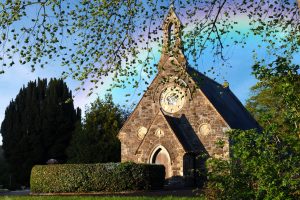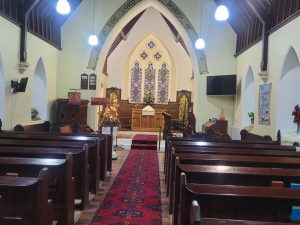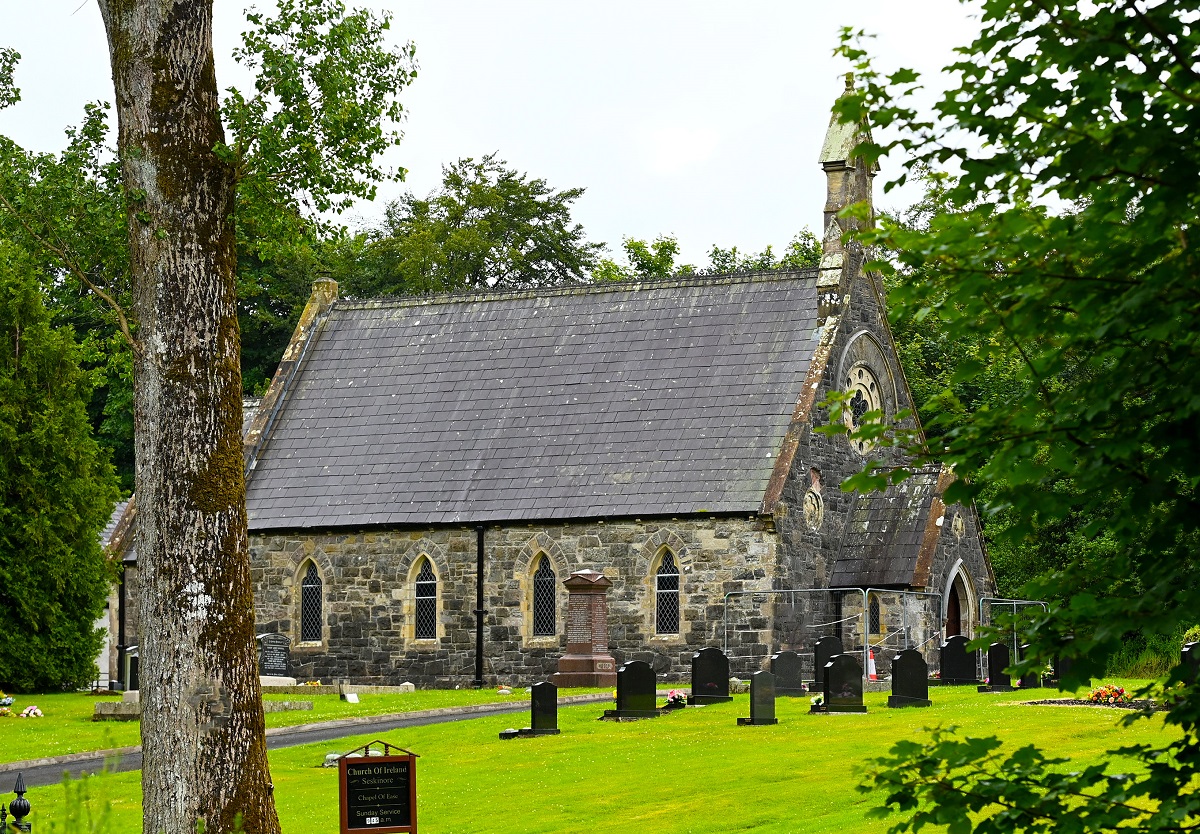Just as history is decided by the victors, oftentimes the architecture of old is either saved or lost because of the decisions of a small, monied minority.
At this very moment, the Church of Ease in Seskinore is going through a period of relative uncertainty, most of which is financially-founded.
There are repairs that need done. Finding a full-time minister is hard. And, in the event that a church member with a philanthropic streak doesn’t strike lucky in the lotto soon, the delicate future – and, in some sense, rich history – of this beautiful rural church will remain in the collective hands of the congregation that attends it.
To find out what it is about the church’s legacy and function that commands such support from local people, we spoke with one its most active members, Yvonne Wilson.
“Built in 1873, it was originally erected to give local members of the Church of Ireland their own place of worship,” began Yvonne, who is the current chairperson of the church’s fundraising committee.
“In the years that came before its conception, commission and subsequent construction, believers from the Seskinore area of the Parish of Clogherny had to travel four-miles to Beragh in order to practice their faith.”
Though that might not seem like much today, back then, when Henry Ford was still in nappies, it was a journey that would have tested the devotion of even the most pious people.
The first mention of the idea of building a church specifically for the people of Seskinore is found in a letter addressed to Lord John Beresford, the then Archbishop of Armagh and Primate of All Ireland.
“It was a direct request that a temple be built within the village,” explained Yvonne.

Lord John Beresford, though astronomically better off than those whose behalf the appeal was made on, would have, nevertheless, understood that the only mode of transport available to the vast majority of the congregation at the time would have been the lower extremities with which they were born.
“The distance would have placed an insurmountable obstacle between many people and their spiritual needs,” she said.
However, despite the apparent necessity and good sense of their appeal, a further 20 years would pass before the Chapel of Ease came to be.
Which brings us to our next date of real significance: 1870.
“It was 30 years before the close of the 19th century when Major George Perry McClintock, a local landlord, decided to take matters into his own hands and establish a church on his sprawling estate.
“The plans were drawn up by an architect called Robert A Ferguson of the Londonderry building firm G. and R. Ferguson.”
The church was to be built in an architectural style now known as High Victorian Gothic: The quoins and dressings would be made of local black stone and Dungannon freestone, and it would consist of a four-bay rectangular nave, with a short chancel to the east, a high gabled front with bellcote and wheel window above a porch, and single-storey vestry on the south side of the chancel.
It was finally finished in 1873, and consecrated on September 9 by the Archbishop of Armagh, Marcus Gervais Beresford, probably in the presence of the first rector of the church, Rev Dr Robert Vickers Dixon.
Locals, upon first laying eyes on it, were said to have been captivated by the sublime stained glass window in the chancel, which was dedicated to the memory of Amelia and Major McClintock’s first-born son, Beresford George Perry McClintock, who had died on January 31, 1870, aged eight.
“Following the death of Dora McClintock, the Major’s mother, in 1896,” explained Yvonne, “her grandchildren donated a sturdy, but quietly grand, lectern to the church in her memory.”

Soon after the first service had been said, McClintock submitted an unusual request to the highest clerical authorities.
“In 1875 the Archbishop of Armagh and the Bishop of Clogher granted him permission to exhume the remains of his first-born son and another son, Harry Edward, who had died in infancy in 1866, from the churchyard at Fintona, as well as those of his brother, Samuel John McClintock, who died in 1854.
“They were all transferred to the family’s new burial ground at Seskinore Chapel of Ease.”
Yvonne posited that it is possible that the deaths of his two young sons may have motivated McClintock to erect the church in the first place.
Before concluding, Yvonne referred to ‘one of the most notable events in the history of the church’.
“The funeral of McClintock’s successor, a man named Lt-Colonel John Knox McClintock, took place on Wednesday October 28, 1936.
“It is said to have been attended by people from across Northern Ireland, including Sir James Craig (Viscount Craigavon), the Prime Minister of the country at the time.”
Now the church has entered a phase that we might call its modern history, which, to some degree, has been a more turbulent time than those earlier days.
However, despite challenges, a new church hall was opened in November, 2019, and the fundraising committee continues to work hard in order to help pay for all upkeep and repair work.
“On Saturday, June 29, we had a summer fete on the church grounds, which included a band, barbecue and crafts theme Summer Fete.
“The atmosphere was unbelievable and the day really couldn’t have went any better,” she added.
“The money we raised will be used to restore some stonework that come loose in the last month had some stone work become loose in recent months.
“Thanks to everyone who is helping us keep this simplistic, elegant, wonderful building alive.
“Being part of the Seskinore community really is everything: It’s like having an extended family, and the Church of Ease is a home to us all.”
Yvonne finished this interview by asking everybody to come along to their next fundraising event which is a ‘Christmas coffee morning’ due to take place Saturday, November 2, which will take place in the church hall.
For more details visit their Facebook page: ‘Seskinore Chapel of Ease’.







